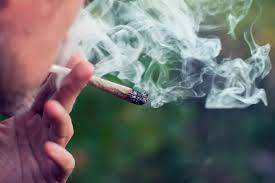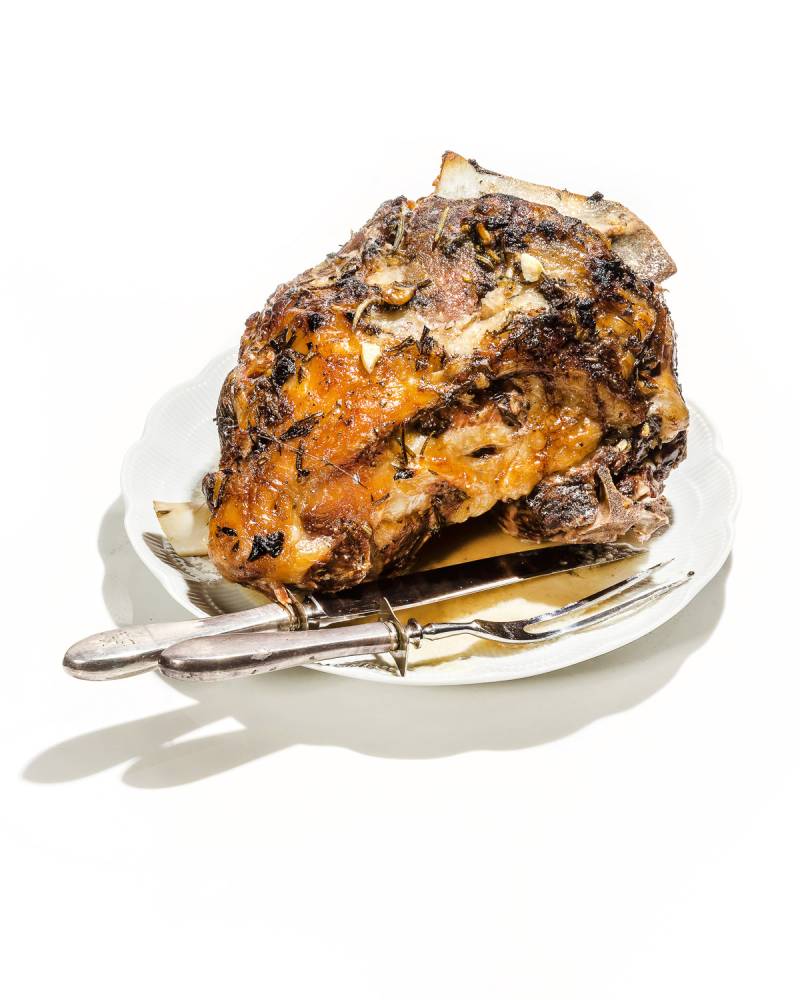It’s widely known that cannabis often does less damage — both to your body and society at large — than perfectly legal substances such as alcohol. (Of course, heavy cannabis use carries its own risks and dangers.) But is there truly a “safe” way to smoke cannabis? And what’s the safest way to smoke weed, relatively speaking?
The short answer is simple: all forms of smoking are associated with negative health outcomes, and very little research exists about the safety of vaping cannabis. There are some early studies that have found vaping could be a safer ingestion method compared to smoking, but vaping is an extremely new phenomenon, and we probably won’t know for certain the health effects for many years to come.
Ultimately, more long-term research is needed to understand the risks of various ingestion methods, not just vaping. Most cannabis users develop their own ingestion preferences over time, and many a creative young person has fashioned a pipe from an apple or a gravity bong from a soda bottle.
Because there are so many different ways to smoke up — from complex bongs and water pipes to rolling papers and one-hitters — we looked at a few of the common ways people smoke marijuana and the harms associated with each. Please remember that we don’t have medical training, we can’t give you medical advice, and we won’t try to.
Licensed from Adobe
What Are the Possible Health Benefits and Dangers of Smoking Marijuana?
Unfortunately, smoking weed is associated with negative health outcomes (as are all types of smoking). A 2015 article published in the Neurotherapeutics medical journal states:
“A number of acute and chronic effects on the respiratory system are associated with cannabis use. Specifically, acute cannabis use has been shown to increase inflammation of large airways, increase airway resistance, and destroy lung tissue. Further, there is evidence that chronic cannabis use also results in increased risk of chronic bronchitis, increased risk of emphysema, chronic respiratory inflammation, and impaired respiratory function.” Emphasis added.
Further, in an article on medical cannabis, the Harvard Medical School states, “One of the few things scientists know for sure about marijuana and cardiovascular health is that people with established heart disease who are under stress develop chest pain more quickly if they have been smoking marijuana than they would have otherwise.”
That being said, there is also some evidence that cannabis can have positive health benefits as well, and the medicinal applications of cannabis are widely acknowledged in the medical community. Some marijuana users prefer cooking marijuana edibles to avoid the risks of smoking, but this ingestion method can sometimes last a long time, while a toke usually won’t last longer than three hours, allowing you to remain functional for the rest of the day. Smoked marijuana is also easier to dose than edibles, and it offers fast, immediate relief from symptoms, whereas edibles can take up to a couple of hours to kick in.
All of this might leave you asking, “What’s the safest way to smoke weed?”
To answer this question, we spoke to Dasheeda Dawson, a cannabis advocate and scientist with a background in molecular biology. In addition, Dawson is the City of Portland Cannabis Program Supervisor. Dawson told SPY.com, “Generally, because of the onset time and full chemical spectrum available, I prefer smoking or vaping cannabis flowers directly without the addition of rolling papers or tobacco blunt papers, which I believe reduces the risks associated with smoking. My favorite microdosing accessory is a single-user glass bowl, chillum or pipe.
“On the weekends, I break out my Rainbow Chill Bong for slightly higher doses of an all-day relaxation blend. For those that prefer using papers, I would recommend using an all-natural Hemp-based roll-up as a healthier alternative to the standard blunt roll-up. Rolling Bouqé is a Black-owned, organic hemp rolling paper brand worth checking out and supporting. Despite trying many new herb vaporizers on the market, the PAX 3 remains my go-to vaporizer for cannabis flowers. The sleek design fits nicely into a purse, it comes in cute colors and it’s easy to clean!”
Vaping
Vaporizers allow you to consume cannabis at a lower heat, which results in a less harsh sensation in the lungs compared to bongs or joints. There’s no smoke involved — instead, the herb is heated in a partial vacuum, which heats cannabinoids into a vapor you can inhale. Users can control the temperature, but anything above 375° – 400° gets very close to the combustion point.
Vaping is also a more discreet and less stinky alternative to joints or water pipes, especially concentrate-based vaporizers. Still, there are tons of non-regulated vapes with dangerous synthetic cannabinoids being sold. Dawson recommends sticking with vape companies that take regulation and quality control seriously, such as PAX 3. There are two main kinds of vapes for pot usage: dry herb vapes, which heats up dry cannabis flower, and pen-style vapes, which heat cannabis concentrates.
As mentioned above, vaping is still an extremely new ingestion method, and little is known about the long-term health implications. In theory, vapes allow you to avoid harmful smoke, but the quality and reliability of vaping products vary widely.
Courtesy of PAX
Glass Smoking Devices
Glass is one of the most common materials used in marijuana pipes. That’s because glass doesn’t contaminate your cannabis, unlike metal or plastic pieces. The major forms of glass to know about are:
Spoon or bowl pipes: Shaped just like a spoon, this was a popular intro to smoking weed for beginners back in the day. At the bottom of the bowl, a hole lets smoke travel from the spoon all the way down to the mouthpiece. Another hole, on the side of the bowl you pack the weed into, allows you to control airflow by covering and uncovering it.
Bongs: Bongs are one of the most common ways that people smoke cannabis. They’re larger than pipes and contain a water chamber. The water acts to cool the harsh smoke while filtering out particulate, making for a more natural hit that’s also smoother with enhanced flavor. In terms of the amount of weed you use for an intense high, this is a great bang-for-your-buck consumption method. Is the combination of water and glass really safer than other options? According to Hemper.co, multiple studies have shown that water does remove some toxic materials from smoke. We can’t independently verify these studies, and ultimately, the only way to avoid the negative health impacts of smoking is to avoid it entirely.
Bubblers: A bubbler is the lovechild of a spoon pipe and a small bong. While it does contain a water chamber, function-wise, it smokes like a bowl.
Chillums: A chillum is sometimes referred to as a glass cigarette due to its similar cylindrical shape. This one-hitter works by packing one end of the cylinder with your flower, lighting one end of it as you would a cigarette, and inhaling. It’s one of the most convenient, portable methods of glass smoking that’s less messy than other alternatives.
Dab Rigs: A dab rig is used for high-potency cannabis concentrates such as rosin, wax and shatter with up to 80% THC and more. It filters water like a bong does, but vaporizes concentrates instead of flower. It does so at higher temps than you would with flower and therefore requires a torch lighter. A “nail” sits at the top and is the shallow dish that concentrates are dropped into, while a dome covers the nail and keeps the vapor in when you’re not smoking it. There are also dab pens, which some people prefer.
Joints
Through the years, old-school joints have remained one of the most favored ways to ingest marijuana. It involves grinding weed by hand or with a grinder, placing it in a thin line inside of a paper and rolling it up. Sometimes, people add a filter to stop burning the fingers and lips or to result in a smoother draw. When it comes to your health, joints do produce smoke from burning paper, which isn’t ideal for the lungs.
The kind of paper you roll up with could make a big difference in the amount of third-party material and contaminants you inhale. Most commonly, rolling papers are made from rice, hemp or wood pulp. If possible, avoid the following words when purchasing papers:
Bleached papers
Flavored papers
Fast-burning papers
Unlike more natural alternatives, these are packed with chemicals and pollutants that could harm your respiratory system. Always opt for unbleached, flavor-free options.
DIY Pipes and Bongs – Don’t Do It, Man
We know that stoners can be creative people, especially when there are no pipes or rolling papers on hand. Still, you should stop Googling how to make a pipe out of aluminum foil or soda cans, because while it technically can be done, it contaminates your weed and isn’t good for your lung health. You’ll have to worry about the potential negative impacts of smoking aluminum — and any other contaminants present on the aluminum, soda can or material you’re using — in addition to all the regular negative side effects of smoking.
You can find instructions for all sorts of DIY pipes on the internet, which make use of everything from apples and pineapples to beer cans. But virtually all of these methods will require using something like tin foil, which is never wise.
Can You Make a Smoking Routine Safer?
Again, we cannot offer medical advice, and because of the negative effects of smoking anything on the respiratory system, no smoking routine is “safe.” However, in the interest of potential harm reduction, here are some common practices employed by stoners who are trying to smoke smarter.
1. Use an activated carbon cannabis filter
Whether you’re smoking out of a vaporizer, joint or a bong, you can try using an activated carbon filter. One of the most reputable filters out there is the MouthPeace. The regular size works for dab rigs and bongs, while the miniature version is better for joints and vape pens.
2. Dabbing
Although the process is a little more complicated than rolling up a joint, it allows you to inhale vapor instead of smoke. You can also use a carbon filter while dabbing. Keep in mind that dabbing results in a higher concentration of THC, and there are negative health effects associated with heavy and chronic use of cannabis.
3. Don’t inhale or hold your breath as aggressively
If you find yourself inhaling very deeply every time, consider taking slightly more shallow breaths, and not holding it in as long.
To Sum It Up, There’s No Healthy Way To Smoke
When it comes to the healthiest way to smoke weed, it’s a bit of an oxymoron. The act of smoking simply isn’t healthy. Although weed has many advantages to benefit our brains and bodies, smoking cannabis releases tar and carcinogens. With pot, you’re holding in the smoke and inhaling more deeply, which exposes you to even more tar. Due to this impact on the lungs, throat and mouth, smoking cannabis is getting less popular as the years go on. Most people agree that smoking isn’t the best form of consumption, but luckily, there are alternatives.
This is a judgment-free zone, but if you’re considering a new method that avoids smoking altogether, you can explore the world of cannabis-infused edible goods. There are plenty of cannabis cookbooks and infusion machines to help you along that journey, whether you’re a pro looking to make a high-dose entree or a beginner looking to try some micro-dosed munchies.
If trying out a recipe sounds intimidating, and if marijuana is legal where you live, you may also be able to try lab-tested cannabis tinctures, which are cannabinoid-infused oils sold in a dropper bottle. They make pinpointing dosage a lot easier and can be used in your existing food or drinks.
Dawson leaves us with this wisdom:
“A conscious cannabis consumer is likely layering on many different consumption methods throughout the day, optimized based upon the person, place or purpose. Regardless of delivery method, I always advise folks to ‘start low and go slow,’ which essentially means take the lowest possible dose and wait to see its effect before taking the next dose. Every method has a different ‘low-slow’ process.
“For example, with smoking, cannabinoids reach the blood very quickly via the lungs so consumers can expect to feel the effects within 5 minutes. In this case, ‘low-slow’ typically means taking a pull from a pipe, bong, or rolled joint/blunt and waiting 15 minutes before determining if you want to take another pull. Once you have figured out your minimum optimal dose level, you can use this as the starting point for your consumption experience with that method going forward.”




